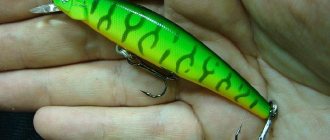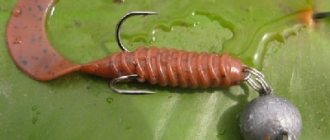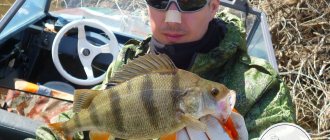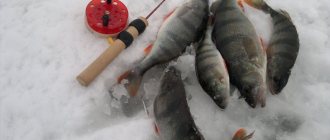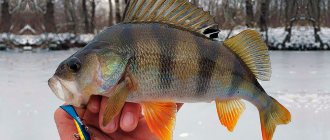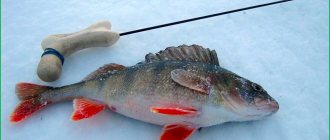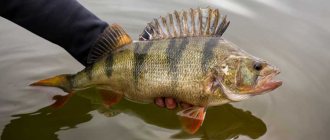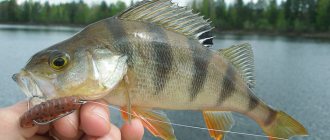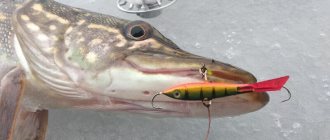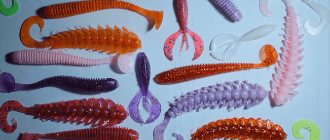Pros and cons of using a wobbler
One of the most popular baits for perch are wobblers.
Their use allows:
- Attract perch by imitating prey.
- Get the benefits of fishing with the current. Wobblers can be lowered along the currents over considerable distances, where perch can hit spawning fish.
- Avoid slipping when making a sweep.
- Catch perch both at the surface and at depth.
Among the negative qualities are:
- Significant dimensions of the wobblers, which do not allow long-distance casting.
- The need for coloring after making a number of catches.
When fishing from the shore, it is recommended to use floating wobblers. If fishing for perch is carried out from a boat, then it is recommended to use a wobbler with a submersible capability.
Choosing the right bait size for perch
Perch is a rather small fish when compared with other inhabitants of reservoirs. Therefore, baits should also be smaller than, for example, when fishing for pike. The standard size of a wobbler for perch is considered to be a bait measuring up to 7-8 centimeters. Wobblers of 9-10 centimeters are used to catch trophy humpback whales. Moreover, the fisherman must know for sure that they are in the water area, so as not to rinse such large baits just like that.
The tactics for catching perch are quite simple. In the pits, the most important thing is to feel for a striped flock and start throwing it around. You need to experiment with wiring; if the fisherman knows that the “striped fighter” is standing on the point, but does not take it, you need to try changing the wiring. For example, move away from standard uniform wiring to more daring twitching, which, as a rule, can tempt even the most passive perch to bite.
And now you can move on to the fun part, namely the selection of wobblers for perch. But before compiling a kind of top wobblers, I would like to say that there is no such wobbler that will catch always and everywhere. For each situation you need to select your own baits, try with colors and patterns.
Read how to catch perch using a spinning rod and avoid making serious mistakes.
Features of selection and use
The priority criterion for choosing bait is the level of buoyancy:
- Floating.
- Neutral.
- Sinking.
Recommendations for use:
- Wobblers with floating features are used in the presence of standing water at medium depths, taking into account the implementation of fishing from the coastal parts of the reservoir.
- Neutral wobblers are primarily used in aquatic thickets where gaps exist.
- Sinking types of baits are used in reservoirs with a current in deeper layers of water. Fishing can be done from boats.
An equally important aspect of a successful perch catch is the presence of a wobbler shape. The following forms exist:
Form:
- Flat.
- Flat and elongated.
- Narrow, bar-shaped, with an exact imitation of live fish.
- Drop-shaped.
- Expanded, cone-shaped and cylindrical, covered with feathers and hairs.
Recommendations for use:
- Lures with a flat shape (SHED) are most promising for use in deeper water areas. The characteristic flat shape of the bait facilitates its use in reservoirs with a sandy, embossed or hard bottom.
- Lures with an elongated shape (RATTLIN) are considered sinking. They are used for catching perch, mainly in the autumn seasons, when, due to colder water, the fish go to greater depths.
- Lures with a narrow, block-shaped form (MINNOW) are considered the most universal due to their inherent varieties.
- Drop-shaped baits (FET) are effectively used in river backwaters, or in parts with small dams, where there is natural water noise and active surface water flow.
- Wobblers with expanded, cone-shaped and cylindrical shapes, with various coatings (POPPERS). Used with spinning rods and fly fishing. It is recommended to use poppers in shallow reservoirs, as well as in reservoirs where there is a lot of algae.
Color design:
- Design with golden shades. Used when fishing in the rain or in cloudy times.
- Design in silver colors, light shades. They are used when fishing in small, transparent and clean waters.
- Design with blue or blue shades. Used for deep-sea perch hunting.
- Decorated in bright shades of yellow or red. Used when fishing in muddy waters.
The sizes of baits, based on their varieties, amount to different volumes. There are wobblers of 2 centimeters in size up to sizes exceeding 30 cm. But the most practical baits range from 4 to 12 cm.
According to the classification of depths, wobblers are as follows:
- Subsurface wobblers (SSR).
- Wobblers, with shallow penetration (SR).
- Wobblers, with penetration to medium depths (MDR).
- Wobblers, deep (DR)
Recommendations for use:
- In the case of fishing on water surfaces, using SSR class wobblers, sizes from 2-4 cm (POPPERS) are selected.
- In fishing situations at shallow depths, taking into account the use of SR class wobblers, it is recommended to choose sizes starting from 7 cm (FET, MINNOW, POPPER).
- If fishing is carried out at medium depths, using wobblers of the MDR class, sizes from 8 to 10 cm should be selected (JERK-BAIT, MINNOW).
- In the case of fishing in deep areas of reservoirs, taking into account the use of DR class wobblers, the nominal sizes of baits should be from 10-12 cm or more (MINNOU, RATTLIN, SHAD).
There are other features of wobblers associated with the presence of movable connecting parts. As a rule, wobblers consist of several parts connected to each other. The presence of such a device ensures active play.
There are varieties of baits “equipped” with a source of sound signals (SHAD, RATTLIN, MINNOU, FET). Such baits are hollow inside, and metal balls are located in this part. Sound “equipment” serves to attract the attention of fish.
Types of wobblers
Krenk
It has a large blade and a wide body, due to which it actively moves in the water. It is preferable to fish with such bait in places with underwater irregularities. It will not allow a snag to occur due to its relatively heavy weight. Another advantage of this weight is the loud splash when casting, which is very attractive to predatory fish. An effective method of fishing with crank is jig.
Minnow
It has a small blade and a narrow body. In appearance it resembles a cigar. Imitates small fish such as chub, dace, gudgeon and others. In common parlance, a minnow is called a fry. Most often, fish bite precisely on such bait. Twitching when using a minnow actively provokes a predator. At the same time, he takes the bait during a pause between intense jerks.
Popper
Models up to 5 cm are used.
Composer
Has high activity during wiring.
In the autumn-winter period, when the fish go deeper, you should choose a wobbler that imitates a small fish, such as a minnow or shad. Thicker models are not suitable as they are too stubborn for depth.
When a school of perch is hunting near the bottom, a crankbait may also be suitable. The size of the wobbler for fishing at depth should be 5-8 cm, no more. If the perch bite is as active as possible, then a wobbler up to 14 cm in size will also be successfully caught. As for its color, natural colors are what you need.
Perch begins to spawn when temperatures rise above 8 degrees Celsius. Therefore, he begins to fatten up immediately after this period - in the spring, and you should choose brightly colored baits.
During the spring-summer period of perch activity, in the upper layers of the reservoir it is necessary to use a deep model. Therefore, the choice should be on cranks. Their size should not be more than 7 cm, and the color does not matter. Black models are very popular. Based on the buoyancy of the wobbler, it is preferable to choose a suspender and a floating wobbler.
Popular wobblers for perch
Jackall Chubby. A distinctive feature of the bait is that it remains stable regardless of the wiring. When fishing for perches, it is recommended to use bait with a depth not exceeding 0.3 m. The total weight is more than 4 grams, with a length of 38 mm. The average price starts from 370 rubles.
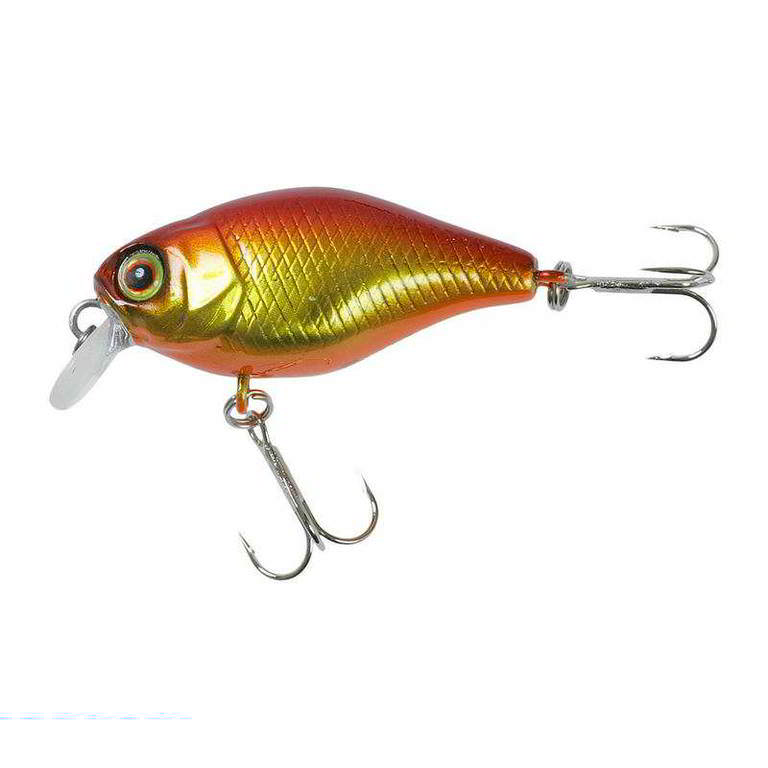
Daiwa TDC 3061F. The bait in most cases is intended for fishing in shallow water. A peculiar feature of the wobbler is its efficiency and stability, regardless of wiring. In perch fishing, it is used when there is a depth of up to 1 m. The total weight of the wobbler is more than 10 grams. From 380 rubles.
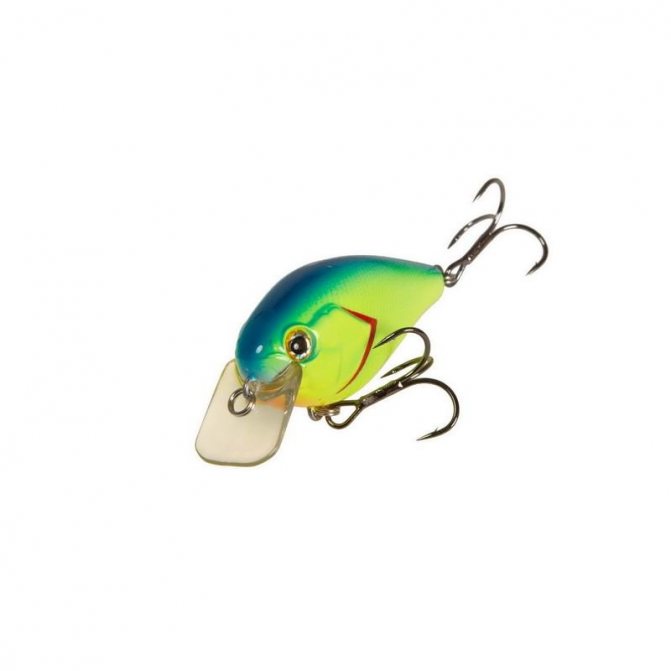
YO-ZURI L-Minnow 44. A distinctive feature of the bait is its positive flight properties, on the basis of which casts are carried out over considerable distances and accurately. The nature of the actions is expressed by performing jerking movements. The wobbler is floating with a medium depth of up to one and a half meters, with a weight of up to 5 mm. Prices start from 270 rubles.
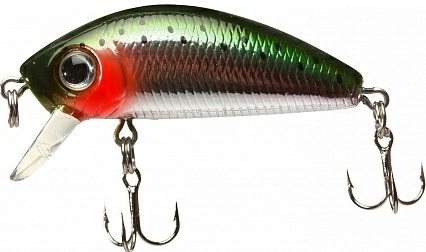
Strike Pro Midge EG-074F. This type of wobbler is recommended for catching especially “lazy” and large perches. The reason is maximum playfulness. With a total weight of two grams, it is floating and is used in medium depths. The price starts from 120-140 rubles.
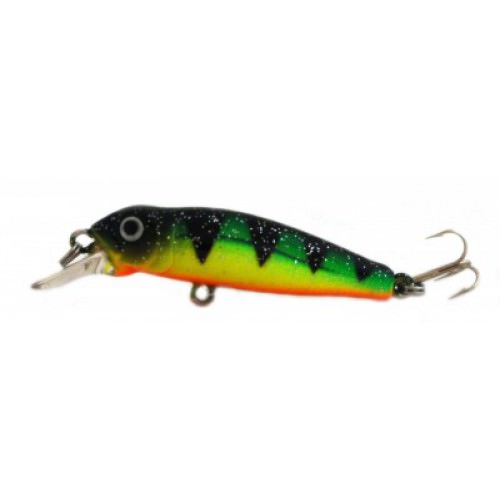
Kosadaka Cord-R 70F. This wobbler is equipped with the ability to simulate a wounded fish during wiring. Specializes in spot fishing. The total length reaches up to 8 cm, with a total weight of up to 5 grams. The assortment includes baits capable of swimming with a depth not exceeding 40 cm. Prices from 430 rubles.

Rapala X-Rap 506. Intended for use for catching large perches in depths exceeding 3 meters. The total length of the wobbler is 6 cm, with a weight of up to 10 g. Typical actions in the use of bait are the production of uniform movements. Estimated on average at 510 rubles.
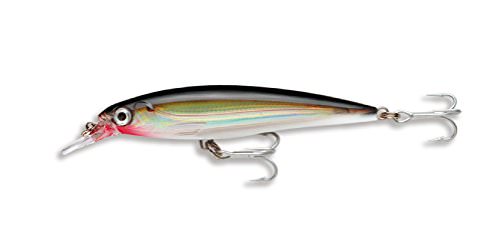
Salmo Hornet H4F. Used for catching perches, taking into account the use of various types of fishing rods, regardless of the depth characteristics. The total weight of the wobbler is up to 4 grams, up to 5 cm long. They are buoyant and neutral. Prices from 340 rubles.
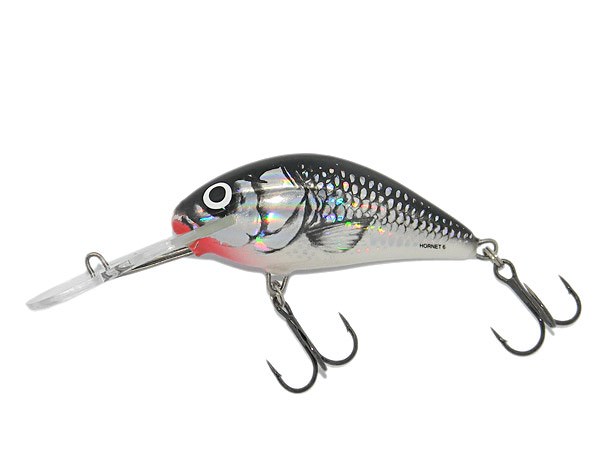
Tsuribito Baby Crank 35f-DR. Designed for deep-sea perch fishing. The weight of the bait is more than 4 grams. More than 3 cm long. In perch fishing, a wobbler is used, with swimming features with a depth of 1.7 m. Prices start from 410 rubles.
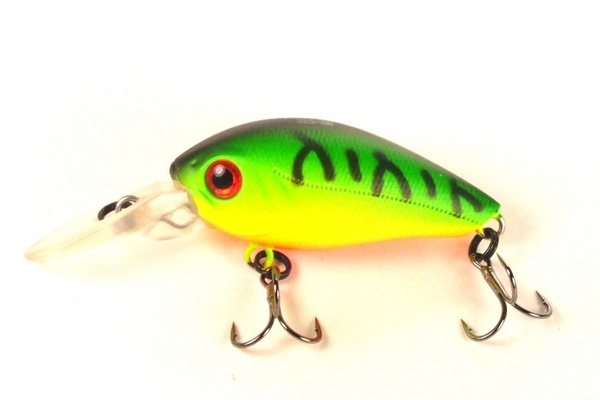
Crackjack 58SP-MR. Lures of this type are especially distinguished by their high performance. The effectiveness of catching perch with a wobbler lies in its neutrality. The depth can reach up to 2 m. The length reaches 6 mm, with a weight of more than 5 grams. Prices from 360-380 rubles.
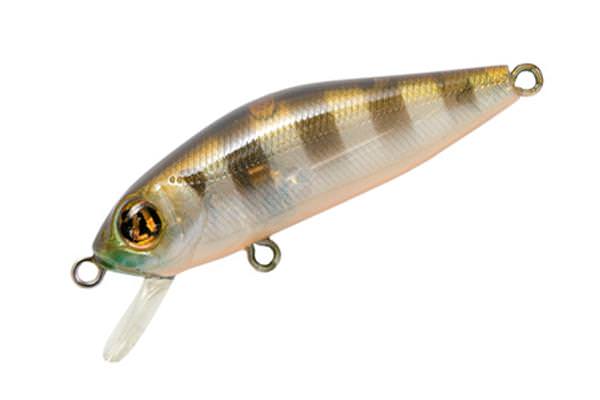
Rigge 56F Deep. A bait with an oblong body shape, belonging to the minnow type. The design with a long blade allows the wobbler to sink to significant depths when fishing for perch. The submersibility of the bait reaches almost 2 meters. It is used using jerk wiring.

Lure Zip Baits Orbit 80 SP–DR. Most experienced fishermen choose this type of bait when fishing for perch. Its length reaches up to 8 cm with a weight of more than 8 grams. Has a neutral type of buoyancy. The depth level is more than 1 m. Despite its large dimensions, the wobbler has excellent playfulness and accepts any type of wiring well.
The bite occurs when the wobbler is suspended under water. When catching perch, jerking movements are performed, after which a pause is made, then jerking actions are repeated. The wobbler ensures long-distance casting and is stable in currents. Average prices start from 670-820 rubles.
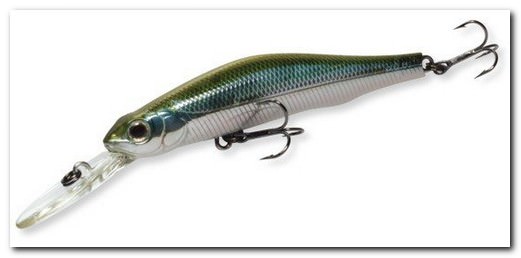
Feeding and wiring of silicone when fishing for perch
Date: January 31, 2021 | 734
Perch is a very widespread and popular fish in vast areas. Plus, it's a predator. This means that perch appears very often in the catches of spinning anglers who fish with silicone baits. Maybe more often than other fish. And it seems that this is the most simple fishing. How difficult is it to train perches... But this is just an illusion. And perch fishing has its own wisdom and subtleties. The difference between the results between knowing and using them and acting at random is enormous. An important point is the correct presentation and placement of this or that soft bait. If you know what kind of movements and animations the perch likes, then you can catch a lot more when the perch is active, and generally catch at least something when it is passive. And in this article I want to talk about the optimal placement of baits to successfully catch perch.
So, what does perch like in terms of wiring and presentation of perch?
Over the years of practice, both when fishing with silicone and other types of artificial baits with a spinning rod, I have drawn conclusions, or rather, confirmed well-known conclusions. Perch with high or medium activity loves high-frequency vibrations of the bait . Those. small amplitude and very active vibration - this is very good!
What can such a game provide us with? Made of silicone, these are small and medium vibrotails and twisters - i.e. active baits. Lures should have a light, thin tail. Then you will get exactly the right high-frequency playing on regular uniform wiring.
Moreover, fishing in this way can occur in a variety of layers of water. Active perch can be caught near the surface, in the middle layer and closer to the bottom, using a regular microjig with small jig heads or a joint with light Cheburashkas.
This concerns uniform wiring. If such a predatory fish as pike is very favorable towards the phase of uniform fishing and often bites at these moments, then perch reacts to it much worse.
Yes, according to the speed of uniform wiring. Don't do it too quickly, it's not a big deal for you! If we are catching a very active perch, which is literally seething like a cauldron on top, then we can use a twister or vibrotail at medium speed.
And if the perch sticks out at the bottom, feeding, but the activity is average, then it is better to go slower. Not to the point of dying out, but quite restrained.
Also, high-frequency oscillations work when, for example, a twister with a thin tail operates in a current with a diverting leash.
This is probably all, in an even manner. In fact, when you drive even the same active rubber evenly with periodic pauses, during which the bait fails and begins to sink to the bottom, the perch more often attacks the silicone on the fall . Many times more often. This has been seen many times! So, if you catch perch with a regular jig, small twisters or vibrating tails, we pause more often and shorten the segments of uniform fishing.
As for passive rubber, various slugs, worms, crayfish, cuttlefish that do not have their own game.
Perhaps the most effective and simplest wiring method here would be jump wiring along the bottom . Those. throw it in and let the assembly fall to the bottom. Then a light, short toss of the rod tip. Pause. We select half a turn - a turn with the coil - toss again, etc. The tosses can be single, or they can be double or triple. We do not make smooth extended throws, but rather short and rather sharp ones. You can take long pauses, or you can, practically without pauses, make a whole series of jumps along the bottom in a row. This is how they work with classic microjig and nanojig using both passive and active baits. Nothing prevents you from using vibrating tails and twisters this way. They catch great too.
Both floating silicones and sinking ones work well when jumping. Perhaps I would give a slight preference to the floating option in places with a silty, cluttered bottom. Such rubber, rising above the bottom during a pause, is banal, better noticeable.
As for catching medium and large perch with crayfish and cuttlefish, i.e. for bulk food. What I like best here is the intermittent dragging along the bottom. We put the crayfish on the bottom. We keep the rod tip quite low. And with short steps, twitching, we drag the crayfish along the bottom. A short step, a pause, etc. Then the silicone will practically not come off the bottom, but will perfectly represent a real, backing crayfish. It’s especially cool if the model is floating, or made with floating claws. Then they rise above the bottom, as if the crayfish were really swatting away the persistent perch. This similarity to the behavior of a real crustacean leaves no chance for the fish.
Perch can be caught very well with a “wacky worm” style rig. A worm or other elongated bait placed across the body and held in a series of short jerks is a very effective bait for perch. In fact, with such a trembling, pulsating wiring, the worm carries out the same high-frequency vibrations that perch loves so much. So, using the wacky method, you can attach the bait on a drop shot, a retractable leash, or on a regular jig rig.
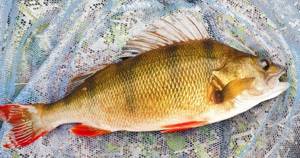
There are, perhaps, two exceptions. When the above tips don't work. The first is catching purposefully large perch, especially passive ones (when a place where it lives is found, large perch often manifest themselves). And also, fishing in late autumn, on the eve of freeze-up, in very cold water.
In these cases, it is better to use very slow, inhibited wiring of passive baits. This can be either a hinged mounting with a worm, slug, cancer, or a drop-shot, for example, with the same slug or a thick silicone worm. Those. The tosses are still not very long, but much smoother. The wiring of active baits is carried out evenly and very slowly. It is advisable to make longer pauses. And so that the equipment falls to the bottom more slowly and floats, they try to use the minimum weight of the weight.
Share with your friends:
Categories: Edible fishing · Tags: Perch, Serving, Lures, Posting, Technique
How to make a “catchable” wobbler for perch with your own hands
To make a catchable bait, you need to “arm yourself” with a jigsaw and a drill.
For registration you need:
- Metal wiring.
- Plastic material.
- Dye.
- Varnish.
- Lead balls.
- Glue.
- Hooks.
The work begins with sawing a “sketch” of a wobbler based on a printed photo of the bait.
You can choose plywood as the main material because of its density.
After this, you need to use an awl to drill holes for the hinges, which will be located in the center of the layout. Next, by clamping the layout, a cut is made. During sawing, the model should be in a perpendicular position to the clamp.
Further actions are related to the preparation of layouts. The models are cleaned with fine-sand sandpaper and dipped in varnish. In the process of placing the blanks in the varnish, it is necessary to shake the varnish container with the blanks contained inside approximately every hour. The downtime of models in varnish should be at least 8 hours.
After this, the workpieces are removed from the container, the holes must be cleaned and, by inserting some kind of pod (can be a match or a toothpick), placed in a vertical position for drying.
A few days later, loops are made from metal wires by winding them in the form of a tight spiral, leaving one free part. The loops need to be inserted into the holes and glued together.
Painting work should begin with the application of basic white paint. Can be applied with an aerosol or with a brush. When choosing paint for decoration, you need to take into account the specifics of using the wobbler. When painting the workpiece, the dorsal part of the bait should have a dark color.
Lure eyes can be made from round molds, with a coating that can reflect light. To make the blade, you can use transparent, plastic rulers. When making them, you need to make several pieces of different sizes, taking into account the fact that the blades must fit tightly into the holes made for them.
Next, holes are made in the blades into which the hooks will be attached. After the blades are placed in the holes, they should be coated with glue and allowed to dry. Once dry, the entire surface of the wobbler needs to be coated with varnish in 3 layers. The total drying time may take several weeks.
To make hollow models, you need to cut out several plywood sketches and lay them in layers. The middle layer should be cut out in the middle and create an empty space. Balls will be placed in the middle part, from the inside. The layers are glued together and processed using the above method. At the end of all the work, a rattling bait is formed.
Rating out of 10 wobblers
Next we will talk about the top ten, which many fishermen rated for their catchability. I would like to draw your attention to the fact that almost all wobblers will be from the middle price range, which any angler can afford to buy. A detailed description of the bait is located immediately below the photo .
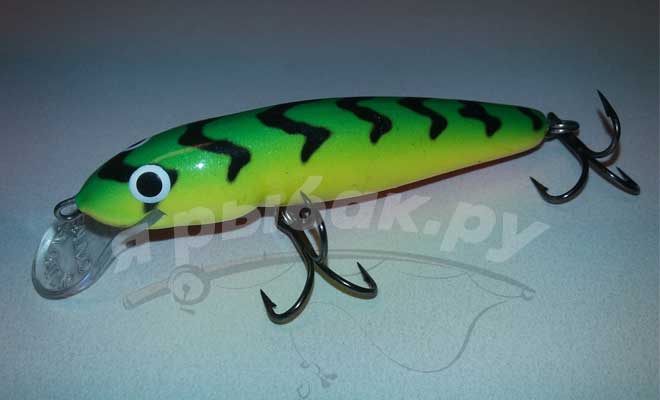
Of course, here too the Finnish company Rapala distinguished itself with its catchy wobbler. It doesn't go down that deep. The maximum depth will be approximately one and a half meters. A wobbler of this color is perfect for fishing in cloudy water, as it has quite bright colors.

The Pontoon 21 company has always been able to make wobblers. The Gosh 60 sp sr catches perch no worse than the Rapala. Its shape is already more reminiscent of a crank and its oscillation frequency will be higher. This wobbler is 5 centimeters in size, which is the optimal length for catching “striped hogs”. A distinctive feature of these wobblers is their range. The shape and weight distribution ensure very long casts even against the wind. Convenient for fishing in currents, as they have a fairly low drag. Wobblers of this model are among the top best wobblers for perch among many experienced fishermen.
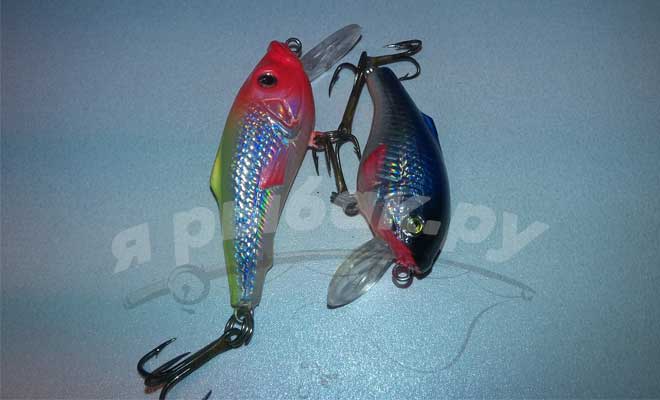
And of course, it’s nice that the St. Petersburg company Aqua pleases us with excellent wobblers for perch. They weigh about two to three grams and at the same time have a fairly large depth. They are very convenient for fishing coastal dumps. The perch happily swallows them completely, so when fishing with such small wobblers, it is advisable to use a leash made of fishing line so that the perch does not fray the main line.

Another interesting and catchy wobbler from Pontoon21. Due to the composite body, the wobbler has a more sweeping and natural game, which clearly has a positive effect on bites. Tantalisa 85sr is more suitable for twitching. It goes no more than 1 meter deep and a perch resting in the coastal grass will obviously be tempted by it. The size of 85 millimeters tells us that such a bait is worth using when trying to catch large specimens.
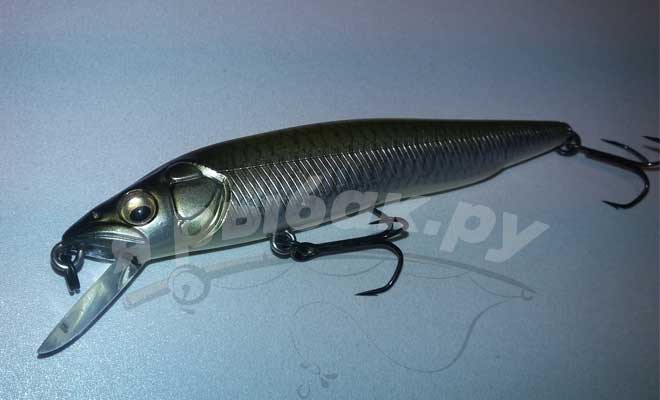
A legend can be added to the same category of twitching wobblers, namely Megabass vision 95 . Almost all professionals have heard about it at least once. Yes, its cost is high, and for the same amount you can buy all higher-priced wobblers, but this price is justified by the good bonuses that attract people to it. At great depths they cannot catch because of their small blade, but conquering coastal thickets will not be difficult.

Another representative of Pontoon21. Gaga goon60ss-mr will already work in holes, because with such a shovel there is nothing to do in coastal areas. The wobbler weighs about 6 grams, but due to such a large shovel and elongated shape, it has slight problems with its flight range. In the sun, its golden sides will play clearly and attract fish from afar.
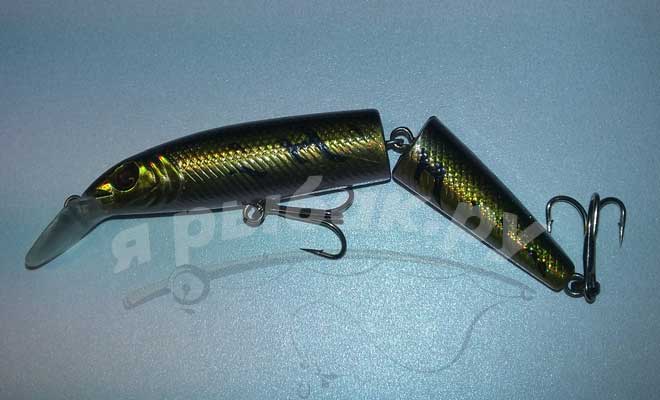
Another good example for twitching. The game is similar to the ones from Pontoon21.
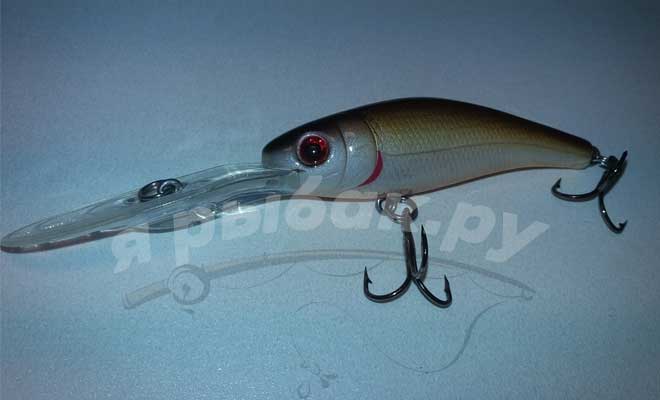
The shovel makes up almost half of the wobbler, and thanks to it it will be able to penetrate the deepest areas and get trophy “stripers” from the depths. Of course, you need to understand that with such a shovel he cannot fly far and it is best to use it on narrow rivers or when fishing from the shore, when you can get almost close to the fishing spot.
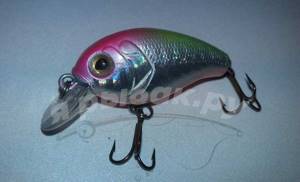
Well, and of course, cranks. Where would perch fishing be without them? They have the highest frequency and create the strongest vibrations that attract perch so much. Their depth, as a rule, does not exceed three meters, but this is enough for their effective use. Many people believe that the best wobblers for perch have always been cranks. Believe it or not - everyone decides for themselves.

Another sample from the category of cranks. This shovel is considered the maximum and provides wiring at fairly large depths. Therefore, you need to be careful when fishing with them in snags so as not to lose expensive bait.
I would like to hope that after reading the material, everyone was able to find out something new for themselves, emphasizing some nuances, thanks to which they will be able to determine for themselves the most catchy wobblers for perch, which will definitely please you.
Fishing with a wobbler
Micro jig tackle allows for catching perch even when there is no bite. In addition, such tackle is considered one of the priority spinning catches. In order to cast a wobbler over long distances, a fast action of the tackle is an integral element. The tip of the spinning rod should have a soft, glued shape, decorated in a bright color to record the “behavior” of the bait.
When choosing a reel, you need to pay attention to the balance of the tackle; the reel should not outweigh the tackle. Regarding the choice of fishing line, it should be braided due to the clear transmission of vibrations.
Ultralight tackle provides rigid wiring. The fact is that jerking movements bring more obvious results in catching perches. When performing such actions, soft spinning tackle cannot provide the full possibility of jerking retrieves. Rigidity is one of the requirements of ultralight gear.
Taking into account the rigidity, the reel will lay the line in a more dense manner due to unequal tensions of the lines during jerking movements. Regarding the cord, it must be thin, but at the same time durable. The choice of diameter largely depends on the hunting conditions. A practical cord diameter is considered to be from 0.1 to 0.12 mm.
Technique: When fishing for perch with a spinning rod, various methods of moving baits are used. Stepped and uniform wiring are the most popular. The method of fishing by uniformly pulling a wobbler is most suitable in spring and summer when fishing at shallow depths.
In the case of using a stepwise wiring technique, it is most widely used in the autumn at a deeper depth of up to 3 m. With this method, considerable attention must be paid to the correct choice of wobbler. The bait should be quite playful. To catch perch, fishing should be done with an intensity of 2 to 10 seconds. After the bait touches the bottom, you need to rotate the reel.
Features of catching perch with a wobbler
First of all, you need to decide on the choice of bait.
Any bait from our list can be used for catching perch if you select the rest of the gear correctly, namely:
- The rod is ultralight with a weight of up to 10 g.
- The reel is lightweight, with a reliable friction clutch and high-quality line winding.
- High-quality braided cord with a diameter of 0.18 - 0.25 mm.
The second most important thing when fishing for perch is wiring.
Although perch is not so picky about this condition, with proper wiring, the number of bites on the wobbler will be much higher.
There are 3 types of wiring:
Stop&go, or wiring with stops
Can be used for catching any predatory fish. The wiring technique consists of several stages. Casting bait - the bait is thrown to the expected habitat of the predator. At an average pace, several revolutions of the reel are made, after which it is necessary to allow the wobbler to completely float to the surface.
Then the cycle of winding the line and stopping is repeated. It is worth noting that this wiring method is only suitable for sinking wobbler models. The bite usually occurs at the moment when the wobbler begins to rise to the surface of the water. If fishing takes place in the current, then in order to deepen the bait to the calculated depth, reeling of the fishing line is carried out more intensively.
Twitching
This type of wiring is very popular among fishermen who prefer to hunt pike , but for catching perch this method of wiring can also be used successfully.
Especially twitching can bring a big catch in the fall in cold water. The purpose of twitching is to attract the attention of fish, which at a given moment in time is not inclined to actively feed.
To do this, the bait is cast at a distance of 15 - 20 meters from the shore and with jerks of the rod and reeling in the fishing line, it is led to the shore. The capture of the bait by a predator can happen at any moment, the main thing is to learn to feel the bait on the tip of the rod and determine the bite in time and hook the perch.
Direct wiring
A very simple tactic to implement.
The wobbler is cast and the fishing line is evenly wound to the shore. This type of wiring can be used for both floating and sinking models. If you use a sinking type of bait, then you need to know exactly the depth of its immersion, since it will not be possible to get a good catch when using a wobbler with a immersion depth of 2-3 meters in the shallows.
Selection by season
The spring bite starts 14 days after spawning. Bottom fishing is recommended by using sinking bait models such as minnows. It is necessary to pay attention to the fact that during fishing the bait makes periodic knocks with its blade on the bottom, which serves as a factor in attracting the attention of the perch.
Wobblers from the manufacturer YO-ZURI HARDKOR SHAD 60 mm have proven themselves well. These baits penetrate to sufficient depth. When making transactions, you need to adhere to some intermediate pauses. Playfulness and strong hold during the flow are recorded.
Rattlin baits of small sizes have proven themselves well in catching schooling perches. Shows effectiveness in uniform and jig retrieves. In places with no current, submersible baits are used. Popular brands are KOSADAKA – ION XS 55 mm.
Summer bite. In order to attract the attention of the perch, you need to make sharp and active jerking movements. After casting the spinning rod and after the tip drops into the water, you need to make periodic short twitches with the spinning rod. Cranks are used from manufacturers such as JAKALL, CHUBBY. The fact is that wobblers have playfulness and different levels of buoyancy, which makes it possible to fish from a boat, with the presence of a current. The most significant feature of the bait is to hold the current without losing its playfulness.
Poppers, with all their inherent characteristics, are also well used in summer perch fishing. By using active and fast jerking movements, the attention of the perch will be attracted. The most successful type of wobbler is considered to be DAMIKI Pirami 40F.
The autumn bite is practically no different from summer fishing. Cranks and minnows show equal effectiveness. But with the onset of cold weather, the water temperature also drops, which helps perches move to greater depths.
In this case, bottom twitching is used, using a minnow with a sinking feature. Manufacturers include RAPALA SHALLOW SHAD RAP , with the presence of high-frequency vibrations at small amplitudes.
You can also fish with poppers of neutral buoyancy. In this case, hard movements are made, accompanied by pauses of up to 2 seconds. After casting the wobbler, you need to make jerks.
Winter bite. Soft twitching is used due to the passivity of perches and their habitat at the bottom of the reservoir. Models of suspenders and sinking characteristics are selected.
When fishing, you need to pay attention to places with the presence of whirlpools, snags and bays. Fry are also factors in large concentrations of perch. The preferred bait types are EVERGREEN Bank Shad, MEGABASS Pro Pike.
Fishing technique
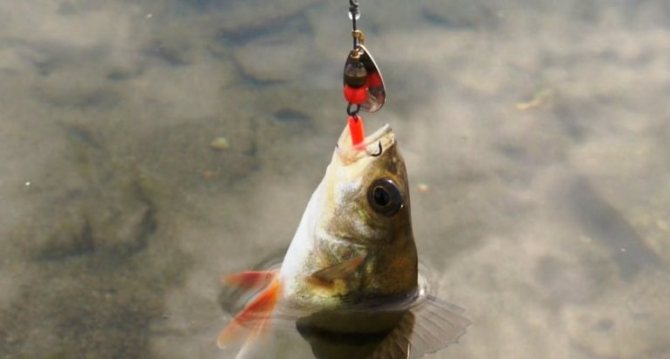
Those who have been fishing for perch for many years know that they become slow in cold weather, so they choose smooth retrieve methods and moderate jerks. In cold weather, perch usually lives near the bottom in snags.
At this time, his metabolism slows down and the fish does not need much food. However, twitch fishing with a sinking wobbler can provide a good catch. But in sunny weather, the fish begins a period of active play, so the retrieve will be fast and sharp.
In this case, the fish will be actively caught using the crank.
There are several wiring techniques using it:
- Implementation of slow wiring.
- Fast wiring.
- Average wiring speed.
- Posting with pauses.
Often, the crank is pulled like a spinner. After casting the rod with bait, you should evenly twist the reel handle. Due to its convex body, the crank makes a vibration, which the predator bites on.
After the bite has started, the bait can be changed to a minnow. When guiding a minnow for perch, it is well controlled and always plays differently, which is why it is so popular among fishermen.
Neutral buoyancy models should be plunged into the water with a jerk and a short pause.
Then, pulling towards yourself, pull. All methods of posting minnows are similar to each other. The main thing is to learn the dosage of jerking force. The speed of the wobbler should be slow or medium for optimal play. An interesting feature of the bait is that the faster you turn the reel, the deeper it will sink.
However, fast wiring also has advantages. The deeper the bait sinks, the more likely it is to be seen by predatory fish such as perch. The bite of a small perch is barely noticeable. You need to be sensitive and attentive to recognize it. Also, you should be careful, if a fish is caught on a wobbler, you need to hook it smoothly. If the fishing time is good, the perch can suddenly take the bait, and sometimes knock on the bait without capturing it.
Fishing out a predator will not be difficult, but for large specimens you will need a landing net. When fishing in winter, the perch can be thrown onto the snow along with the fishing line, because when trying to lift the fish out of the water, the fishing line may break. An individual weighing up to 500 grams must be picked up with a special hook or by picking it up with your hand under the gills.
